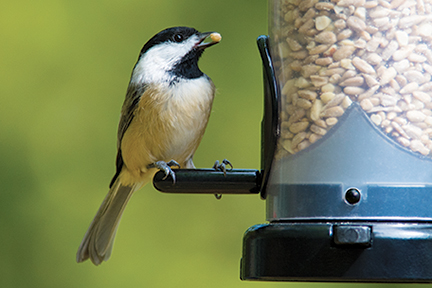Ants, Wasps, and Bees
UNDER CONSTRUCTION
Ants
To Discourage Ants Try:
Ant Moats: Where ants must cross water to get to the food.
Nectar Protector
Nectar Protector Jr
Trap It
Chemical Deterrent:
Ant Guard - has ant repellent
Nectar Fortress - a gel, safe for birds, that is used to deter ants from an area
Bees
Many feeders have built it bee guards. Bee guards are NOT universal to all feeders but to a specific feeder or type of feeder. Their effectiveness may vary.
To relocate bee hives
Dennis & Sons Bee Wranglers Honey and Bee Products
Teresa Storer - Sales & Service (can do bee removal)
951-505-1184
The Bee Wranglers
Bee Removal and Rescue Services
951-534-0015
https://www.thebeewranglers.com/
Wasps
Wasps sometimes visit nectar and Jelly feeders.
- Used bee guards
- Avoid offering Jelly
Special Note on Fresh Fruit and Jelly:
Fresh Fruit & Jelly is open access - where if you try to discourage bees & wasps you also discourage the intended birds. Bee's are more common at feeders during hot Spring & Summer days.
- Offer Jelly only in mornings & evenings
- Offer Fruit or Jelly during early spring of Fall
- Offer live mealworms or nectar instead of Jelly for Orioles
If your Nectar or Jelly Feeder is swarming with bees or wasps
YOUR SAFETY COMES FIRST!
- Killer Bees are not visually distinguishable from Honey Bees. It is typically by their aggressive behavior that they make their presence known.
- For your own personal safety and those around you - avoid contact with any swarm of bees or wasps.
- Take down or move your nectar feeders
- If need be call in a Bee expert or pest management company if a colony of bees or wasps become a safety issue
- Wait until the evening when the bees & wasps have returned to their home and bring in the nectar/jelly feeder
- Birds are sometimes discouraged when there is a swarm of bees or wasps around their feeder
Regarding Bees & Nectar Feeders
- If bees have found your feeder it is likely they were somehow successful in getting to the nectar
- The key is finding how they are getting to the nectar
Are they drinking directly from the ports?
- Add bee guards if they are available
- Switch to another style feeder with better bee guards
Are they getting inside the feeder?
- Replace bee guards if they were removed or worn out
- Switch to another style feeder with bee guards
Are they drinking from the seems or sides of the feeding ports?
- One can add mineral oil, skin so soft, or peppermint oil to the sames. Bees dislike this. Be careful its not in an
area where the birds will come in contact with.
Is the feeder leaking?
- Over time feeders wear down and need replacing
- Some feeders have issues with nectar expanding and coming out of the ports and seems with
temperature/pressure changes
- Move feeder to the shade or add dark colored dome to shade feeder
- Switch to a different model feeder
Are other birds drinking from the feeder and causing nectar to spill out?
- Orioles, Woodpeckers, Mockingbirds, Black-headed Grosbeaks, Warblers, and Tanagers are known to drink
from hummingbird feeders
- If you have Orioles visiting your feeder you can add a special feeder just for them and offer them nectar, live
mealworms, Jelly and sometimes orange slices to get them coming back more frequently
Take down or move the feeder
- Bees are creatures of habit. Moving the feeder or taking it down will encourage the bees to go elsewhere.
Saucer Style Hummingbird feeders are much less likely to leak or have bee issues
- Saucer style feeders by design have fewer leaking issues and bee guards are available to go on the underside of the
nectar ports of some feeders. .

